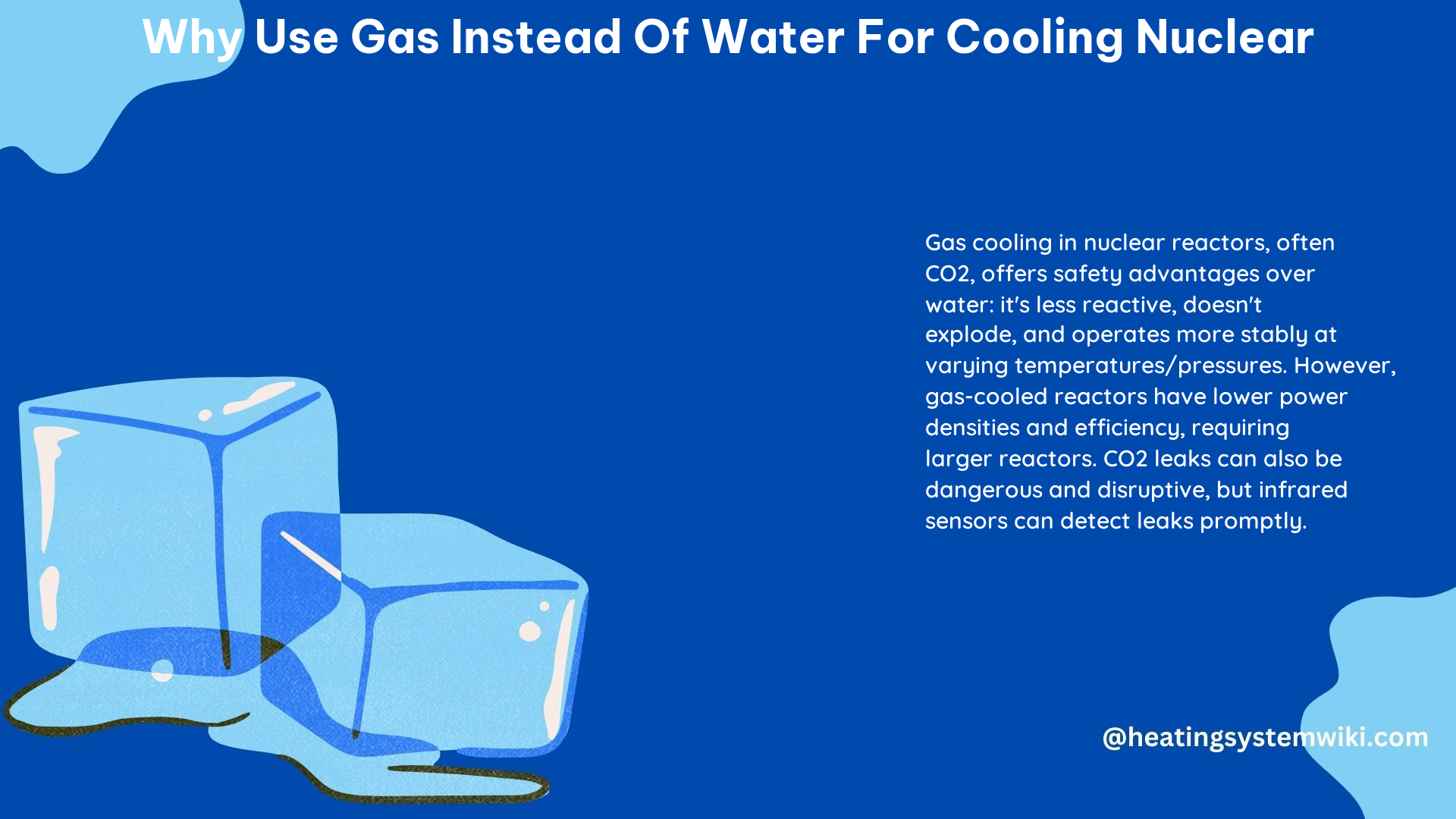When it comes to cooling nuclear reactors, both water and gas can be used as coolants, each with its own advantages and disadvantages. While water is a more traditional choice and offers high thermal efficiency, it also poses a risk of explosions during meltdown events. On the other hand, gases like CO2 or helium are less reactive and do not pose a risk of explosions, making them a safer choice. However, gas coolant systems have lower power densities, resulting in larger reactors and reduced efficiencies.
Safety Advantages of Gas Coolant Systems
One of the primary reasons to use gas instead of water for cooling nuclear reactors is the inherent safety of gas coolant systems. Gas coolant systems, such as CO2 cooling systems, do not pose a risk of explosions during meltdown events. This is because gases like CO2 are less reactive and do not produce explosive gases like hydrogen and oxygen when they heat up. In contrast, water-cooled systems can produce explosive gases during meltdown events, which can lead to catastrophic accidents like those seen at Chernobyl and Fukushima.
The flexibility of gas coolant systems is another key advantage. These systems are more flexible in terms of operating temperatures and pressures, resulting in a more stable system that responds more slowly to catastrophic faults than water-cooled reactors. This is because gases have a lower heat capacity than liquids, meaning they can absorb and release heat more quickly. This makes gas coolant systems more forgiving in the event of a malfunction or accident.
Technical Specifications of Gas Coolant Systems

When it comes to technical specifications, gas coolant systems offer several advantages over traditional water-cooled systems. For example, gas coolant systems can operate at higher temperatures and pressures than water-cooled systems, resulting in a more stable and forgiving system. Gas coolant systems can also operate at lower pressures than water-cooled systems, reducing the risk of explosions and leaks.
CO2 cooling systems are a popular choice for gas coolant systems due to their safety and flexibility. CO2 has a low critical point, meaning it can be used as a liquid or a gas at relatively low temperatures and pressures. This makes CO2 cooling systems easier to operate and maintain than traditional water-cooled systems.
In terms of efficiency, CO2 cooling systems offer several advantages over traditional water-cooled systems. CO2 has a higher heat capacity than water, meaning it can absorb and release heat more efficiently. CO2 cooling systems can also operate at higher temperatures and pressures than water-cooled systems, resulting in a more efficient system.
However, CO2 cooling systems do have some drawbacks. CO2 is a greenhouse gas, meaning it contributes to climate change. However, the amount of CO2 released during normal operation is relatively small, and can be offset by the low carbon emissions of nuclear power.
DIY Nuclear Cooling Systems
When it comes to DIY nuclear cooling systems, safety should be the top priority. This means using safe and reliable materials, and following all relevant safety guidelines and regulations.
One option for a DIY nuclear cooling system is a CO2 cooling system. To build a CO2 cooling system, you will need several key components, including:
- CO2 tank: The CO2 tank stores the coolant gas and provides the necessary pressure for the system.
- Compressor: The compressor is used to circulate the CO2 coolant through the system.
- Condenser: The condenser is used to cool the CO2 coolant and convert it from a gas to a liquid.
- Expansion valve: The expansion valve is used to control the flow of the CO2 coolant and maintain the desired pressure and temperature.
- Heat exchanger: The heat exchanger is used to transfer heat from the reactor to the CO2 coolant.
Building a CO2 cooling system can be a complex and challenging project, and should only be attempted by experienced DIYers with a strong understanding of nuclear power and cooling systems. It is also important to note that building a nuclear cooling system is subject to regulations and permits, and may require approval from local authorities.
References
- Cooling Nuclear Reactors | CO2 Cooling System – Edinburgh Sensors. (2022-09-13). Retrieved from https://edinburghsensors.com/news-and-events/co2-sensors-for-nuclear-power-plant-safety/
- Water vs. Gas Cooled Reactors: Round 1 – Atomic Insights. (n.d.). Retrieved from https://atomicinsights.com/water-vs-gas-cooled-reactors-round/
- Cooling Power Plants – World Nuclear Association. (2020-10-01). Retrieved from https://world-nuclear.org/information-library/current-and-future-generation/cooling-power-plants.aspx
